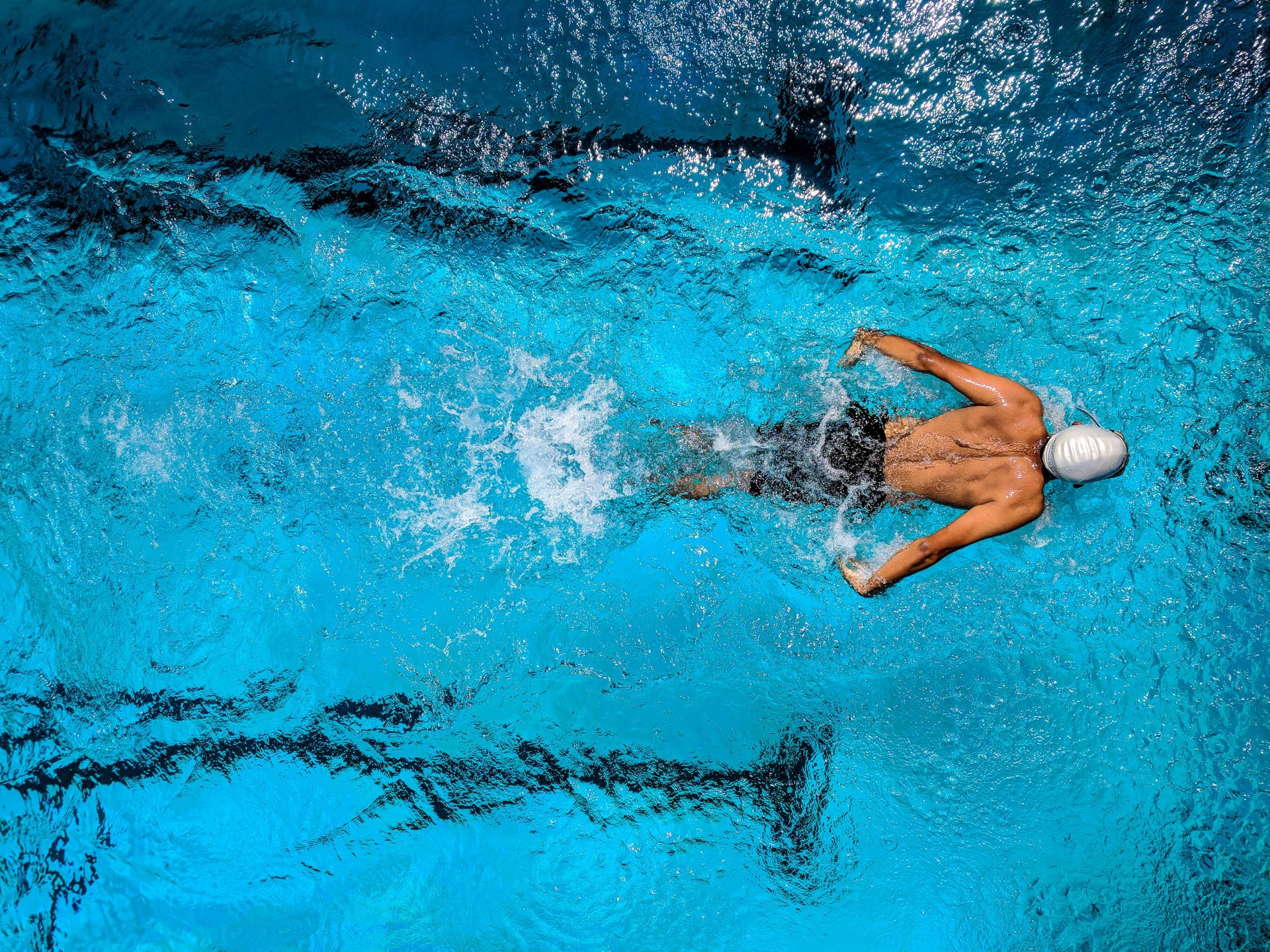Anybody who’s done any swimming for a period of time, whether it’s a weekly dip at your favourite beach or tried some laps at the local pool has probably experienced some element of shoulder pain.
In fact the research tells us that up to 91% of swimmers will complain of shoulder pain at some point during their training (Feijen, Tate, Kuppens, Claes, & Struyf, 2020).
Swimmer’s shoulder was defined as far back as the 1970’s and was originally thought to occur as a result of tendon impingement (Martino & Rodeo, 2018).
We now know that shoulder pain in swimmer’s can occur for a variety of reasons.
One of the most common of these is overuse, closely followed by muscle weakness or fatigue (Prien et al., 2017).
It is these two contributing factors to shoulder pain that we will discuss in more detail here as these tend to be the reasons recreational swimmers report shoulder pain.
In many cases the combination of reduced muscle endurance, poor shoulder blade control, decreased trunk strength and spinal stiffness inevitably lead to shoulder pain in recreational swimmers (Struyf, Tate, Kuppens, Feijen, & Michener, 2017).
Combine this with a higher than usual training load when preparing for an event and shoulder pain is always going to occur.
Factors to remember to reduce the risk of swimmer’s shoulder (Blanch, 2004):
- Improve joint range of movement
- Increase shoulder flexibility
- Improve thoracic (middle back) rotation
- Increase hip extension
- Improve cervical (neck) rotation
- Improve muscle strength
- Focus on rotator cuff
- Improve trunk strength
- Improve scapula (shoulder blade) position with stroke
- Control over training
If you would like more information on any of this please don’t hesitate to make an appointment with one of our physiotherapists.
Any one of these factors on their own can be important in minimising the risk of developing swimmer’s shoulder.
If a few of them can be combined and controlled then the swimmer is well on their way to reducing some of the clearest risks in developing shoulder pain.
It’s always important to remember that although many swimmers believe that shoulder pain is just part of swimming this doesn’t need to be the case.
In many cases the simple of advice of reducing training load during painful episodes can be the difference between entering a competition in pain or competing at your best (Matsuura et al., 2019).
Shoulders are very important when it comes to swimming, so follow a couple of these simple bits of advice and enjoy that next dip in the pool or the surf.
References
- Blanch, P. (2004). Conservative management of shoulder pain in swimming. Physical Therapy in Sport, 5(3), 109–124. https://doi.org/10.1016/j.ptsp.2004.05.002
- Feijen, S., Tate, A., Kuppens, K., Claes, A., & Struyf, F. (2020). Swim-Training Volume and Shoulder Pain Across the Life Span of the Competitive Swimmer: A Systematic Review. Journal of Athletic Training, 55(1), 32–41. https://doi.org/10.4085/1062-6050-439-18
- Martino, I. De, & Rodeo, S. A. (2018). The Swimmer ’ s Shoulder : Multi-directional Instability, 167–171.
- Matsuura, Y., Hangai, M., Koizumi, K., Ueno, K., Hirai, N., Akuzawa, H., & Kaneoka, K. (2019). Injury trend analysis in the Japan national swim team from 2002 to 2016: Effect of the lumbar injury prevention project. BMJ Open Sport and Exercise Medicine, 5(1), 1–8. https://doi.org/10.1136/bmjsem-2019-000615
- Prien, A., Mountjoy, M., Miller, J., Boyd, K., Van Den Hoogenband, C., Gerrard, D., … Junge, A. (2017). Injury and illness in aquatic sport: How high is the risk? A comparison of results from three FINA World Championships. British Journal of Sports Medicine, 51(4), 278–283. https://doi.org/10.1136/bjsports-2016-096075
- Struyf, F., Tate, A., Kuppens, K., Feijen, S., & Michener, L. A. (2017). Musculoskeletal dysfunctions associated with swimmers’ shoulder. British Journal of Sports Medicine, 51(10), 775–780. https://doi.org/10.1136/bjsports-2016-096847

